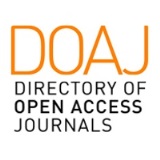Animated films in the classroom: Studio Ghibli as an educational tool
DOI:
https://doi.org/10.58265/pulso.7757Keywords:
Film Based Learning, Studio Ghibli, Educational Innovation, Educational Values, Primary EducationAbstract
This study introduces Film‑Based Learning (FBL), an emerging methodology that harnesses the pedagogical potential of animated films to enrich primary education. Building on Project‑Based Learning (PBL), FBL integrates curricular content with Studio Ghibli movies— renowned for their artistic quality and for promoting universal values such as gender equality and social responsibility. Implemented across all primary grades in a Madrid school, the convergent mixed‑methods design combined interviews with nine teachers and analysis of students’ reflections and work. A five‑dimension rubric guided film selection according to educational relevance and appropriateness. Results show that FBL effectively fostered critical thinking, creativity and transversal competencies such as media literacy and cultural awareness. Teachers positively rated the increased student engagement and the meaningful discussions that connected abstract concepts with real‑world contexts. This study provides a practical framework, aligned with Spain’s Royal Decree 157/2022, and suggests avenues for evaluating its applicability in other settings.
Downloads
References
Aguado Peláez, D., & Martínez García, P. (2019). Cuando el modelo de dominación se agota. Una lectura desde la sostenibilidad de la vida de las ficciones de Hayao Miyazaki. Investigaciones Feministas, 10(2), 351–366. https://doi.org/10.5209/infe.66498
Anderson, M., & Jefferson, M. (2009). Teaching the screen: film education for generation next. Allen & Unwin.
Boletín Oficial del Estado. (2022, 2 de marzo). Real Decreto 157/2022, de 1 de marzo, por el que se establecen la ordenación y las enseñanzas mínimas de la Educación Primaria. https://www.boe.es/buscar/pdf/2022/BOE-A-2022-3296-consolidado.pdf
Bordwell, D., Thompson, K., & Smith, J. (2024). Film art: an introduction (13th ed.). McGraw Hill.
Braun, V., & Clarke, V. (2006). Using thematic analysis in psychology. Qualitative Research in Psychology, 3(2), 77–101. https://doi.org/10.1191/1478088706qp063oa
Buckingham, D. (2003). Media education: literacy, learning, and contemporary culture. Polity Press.
Cavallaro, D. (2006). The anime art of Hayao Miyazaki. McFarland & Company.
Creswell, J. W. (2014). Research design: qualitative, quantitative, and mixed methods approaches (4th ed.). SAGE Publications.
Díaz Herrero, S., & Gértrudix Barrio, M. (2021). El cine como metodología didáctica. análisis sistemático de la literatura para un aprendizaje basado en el cine (ABC). Contratexto, 35, 225–253. https://doi.org/10.26439/contratexto2021.n035.4964
Elsaesser, T. (2016). Film history as media archaeology: tracking digital cinema. Amsterdam University Press.
Freire, P. (2012). Pedagogy of the oppressed. Bloomsbury.
Gardner, H. (1983). Frames of mind: the theory of multiple intelligences. Basic Books.
Instituto Nacional de Estadística. (2022). INE 2022. En Ministerio de Cultura y Deporte, Encuesta de hábitos y prácticas culturales 2021-2022 (pp. 345–360). https://www.cultura.gob.es/dam/jcr:f2932131-e501-4da6-b5f4-6387044916cf/encuesta-de-habitos-y-practicas
culturales-2021-2022.pdf
Jenkins, H. (2006). Convergence culture: where old and new media collide. New York UniversityPress. http://www.jstor.org/stable/j.ctt9qffwr
Livingstone, S. M. (2018). Children and the Internet: great expectations, challenging realities. Polity Press.
Marengo, D., Giannotta, F., & Settanni, M. (2017). Assessing personality using emoji: an exploratory study. Personality and Individual Differences, 112, 74–78. https://doi.org/10.1016/j. paid.2017.02.037
Monaco, J. (2009). How to read a film: movies, media, and beyond art, technology, language, history, theory (4th ed.). Oxford University
Press.
Monleón Oliva, V. (2020). La lucha cinematográfica entre Oriente y Occidente: Studio Ghibli versus Disney. Cuestiones Pedagógicas, 1(29), 112–122. https://doi.org/10.12795/CP.2020.i29.09
Napier, S. J. (2016). Anime from Akira to Howl’s Moving Castle: experiencing contemporary Japanese animation. St. Martin’s Press.
Núñez-Gómez, P., Cutillas-Navarro, M.-J., & Alvarez-Flores, E.-P. (2020). Cine como herramienta de aprendizaje creativo en Educación Primaria. Estudios sobre Educación, 38, 233–251. https://doi.org/10.15581/004.38.233-251
Odell, C., & Le Blanc, M. (2019). Studio Ghibli: the films of Hayao Miyazaki and Isao Takahata (3rd ed.). Kamera Books.
Piaget, J. (1954). The construction of reality in the child (M. Cook, Trans.). Basic Books. https://doi.org/10.1037/11168-000
Ryan, R. M., & Deci, E. L. (2000). Self-determination theory and the facilitation of intrinsic motivation, social development, and well-being. American Psychologist, 55(1), 68–78. https://doi.org/10.1037/0003-066X.55.1.68
Vicent Martín, L. M. (2016). El cine en la infancia: un medio educativo y transmisor de valores [Tesis de máster no publicada]. Universidad Internacional de La Rioja. https://redined.educacion.gob.es/xmlui/handle/11162/120819
Vitz, P. C. (1990). The use of stories in moral development: new psychological reasons for an old education method. AmericanPsychologist, 45(6), 709–720. https://doi.org/10.1037/0003-066x.45.6.709
Vygotsky, L. S. (1980). Mind in society: The development of higher psychological processes (M. Cole, V. John-Steiner, S. Scribner, & E. Souberman, Eds.). Harvard University Press. https://doi.org/10.2307/j.ctvjf9vz4
Published
How to Cite
Issue
Section
License
Copyright (c) 2025 Pulso. Revista de educación

This work is licensed under a Creative Commons Attribution-NonCommercial-NoDerivatives 4.0 International License.
This journal offers immediate open access to its content based on the idea that offering readers free access to research favours a global exchange of knowledge.
Papers are published in the electronic version of the journal under a Creative Commons License: Attribution-NonCommercial-No derivatives 4.0 International
Authors are allowed and encouraged to promote the post-print version (reviewed and accepted for publication version) of their work online before publishing them. This favours their earlier circulation and dissemination and thus a possible increase in their citation and reach among the academic community.













